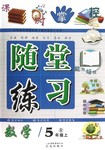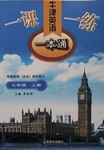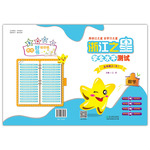
SANTO DOMINGO, Domincan Republic ---An infant girl born with a second head bled to death Saturday after complex surgery (外科手術) to remove her partially formed twin , her parents and doctors said.
A medical team completed the 11- hour operation Friday night and said 8-week-old Rebecca Martinez died seven hours later. Doctors had warned after the surgery that the girl would be at great risk of death.
“ We knew this was a very risky surgery , and now we accept what God has decided , “ Rebecca’s father , 29-year-old Frankin Martinez, said at a news conference with his wife. “ Rebecca is no longer with us physically , but no one will forget her.”
Martinez said the family would bury Rebecca in a private funeral later in the day.
The girl lost a lot of blood in the operation, which apparently ( 明顯地) caused her to suffer a heart attack , said Dr. Jorge Lazareff , the lead surgeon . Friends and family donated (捐贈) almost 4 gallons of blood for surgeons to use Rebeca’s operation
“This was not a failure or an error ,” Lazareff said . “ When we left here last night the girl was in stable condition. At some point in the middle of the night , she started to bleed.”
Rebecca was born Dec. 10 with the undeveloped head of her twin, an exteremely rare condition known as craniopagus parasticus . Rebecca was the eighth documented case in the world of craniopagus parasiticus, doctors said.
All the other infants documented to have had the condition died before birth , making Rebecca\s surgery the first known operation of its kind.
Without an operation , Rebecca would have barely been able to lift her head at 3 months old. Her doctors said the pressure from the second head would have prevented her brain from developing.
“ We always saw Rebecca without the extra part of her body, ”er father said after her death.
Rebecca was their third child-----along with a 4-year-old boy and a 1-year-old girl.
The underlined word “infant “ most probably means____________________.
A. a disabled child
B. a newly-born child
C. a 2-headed child
D. a very young child
Rebecca Martinez died ________________________after she went to the operation table.
A. 8 weeks B. 11 hours C. 7 hours D. 18 hours
Which of the following statements is NOT true according to the text?
A. Rebecca died because mistakes happened during the operation
B. Rebecca most probably died of bleeding
C. Rebecca was her parents’ third child
D. Without an operation , Rebecca would have little hope of living
Which of the following would be the best title of the passage?
A. Infant Girl Dies After 2nd Head Removed
B. Rebecca , Hiciano’s Third Child
C. The Death of a Gril With two Heads
D. Rebecca’s Surgery, the First Known Operation
【小題1】D
【小題2】D
【小題3】A
【小題4】A
【小題1】 詞義理解題。 四個選項似乎都正確, 但是根據下文“with a second head ” 可以排除C 項。 11個月大的幼兒不應該算newly-born child,所以排除B項。 A項“殘疾”和D 項“幼兒”比較之后,可以發現A項其實仍舊屬于對Rebecca 的重復形容,所以最后選擇D項。infant意為“嬰兒,幼兒”。
【小題2】 計算推理題。 根據第二段,既然手術持續11個小時,那么“died seven hours later”就是在這11 小時之后, 所以選擇D項。
【小題3】 辨別是非題。 根據第六段可知A項錯誤。其它各項文中都有相關的表述。
【小題4】 概括歸納題。 這篇新聞報道的主題詞應該是: 手頭女嬰手術后死亡。


 課時掌控隨堂練習系列答案
課時掌控隨堂練習系列答案 一課一練一本通系列答案
一課一練一本通系列答案 浙江之星學業水平測試系列答案
浙江之星學業水平測試系列答案科目:高中英語 來源: 題型:閱讀理解
The first people who gave names to hurricanes were those who knew them best — the people of Puerto Rico. The small island of Puerto Rico is in the West Indies, off the coast of Florida. This is where all the hurricanes begin that strike the east coast of the United States. Often they pass near Puerto Rico or cross it on their way north. The people of Puerto Rico expect some of these unwelcome visitors every year. Each one is named after the Saint’s Day on which it arrives. Two of the most destructive storms were the Santo Ana in 1840 and the San Ciriaco in 1899.
Giving girls’ names to hurricanes is a fairly new idea. It all began with a story called “Storm”, written by George Stewart in 1941. In it a weatherman amused himself by naming storms after girls he knew. He named one Maria. The story describes how she Maria grew and developed, and how she changed the lives of people when she struck the United States.
Weathermen of the U.S. Army and Navy used the same system during World WarⅡ. They were studying weather conditions over the Pacific Ocean. One of their duties was to warn American ships and planes when a storm was coming. Whenever they spotted one, they gave it a girl’s name. The first one of the year was given a name beginning with [A]. The second one got a name beginning with [B]. They used all the letters from A to W, and still the storms kept coming. They had to use three lists from A to W to have enough names to go around. This was the first list of hurricane names that followed the alphabet. It served as a model for the system the Weather Bureau (局) introduced in 1942.
Before 1950 the Weather Bureau had no special system for naming hurricanes. When a hurricane was born down in the West Indies, the Weather Bureau simply collected information about it. It reported how fast the storm was moving and where it would go next. Weather reports warned people in the path of the hurricane, so that they could do whatever was necessary to protect themselves.
This system worked out fine as long as weather reports talked about only one hurricane at a time. But one week in September 1950 there were three hurricanes at the same time. The things began to get confused. Some people got the hurricanes mixed up and didn’t know which was which. This convinced the Weather Bureau that it needed a code for naming the storms in order to avoid confusion in the future.
Hurricanes were first named after the _________.
A. date on which they occurred B. place where they began
C. amount of destruction they did D. particular feature they have
The practice of giving girls’ names to hurricanes was started by _________.
A. a radio operator B. an author C. a sailor D. local people
The purpose for which weathermen of the army and navy began using girls’ names for hurricanes was ________.
A. to keep information from the enemy B. to follow the standard method of the United States
C. not given in the article D. to remember a certain girl
The Weather Bureau began naming hurricanes because it would help them _________.
A. collect information more rapidly B. warn people more efficiently
C. make use of military (軍事的) records D. remember them
查看答案和解析>>
科目:高中英語 來源:湖北省黃岡中學2010屆高三6月適應性考試英語試卷 試卷類型:A 題型:閱讀理解
The first people who gave names to hurricanes were those who knew them best — the people of Puerto Rico. The small island of Puerto Rico is in the West Indies, off the coast of Florida. This is where all the hurricanes begin that strike the east coast of the United States. Often they pass near Puerto Rico or cross it on their way north. The people of Puerto Rico expect some of these unwelcome visitors every year. Each one is named after the Saint’s Day on which it arrives. Two of the most destructive storms were the Santo Ana in 1840 and the San Ciriaco in 1899.
Giving girls’ names to hurricanes is a fairly new idea. It all began with a story called “Storm”, written by George Stewart in 1941. In it a weatherman amused himself by naming storms after girls he knew. He named one Maria. The story describes how she Maria grew and developed, and how she changed the lives of people when she struck the United States.
Weathermen of the U.S. Army and Navy used the same system during World WarⅡ. They were studying weather conditions over the Pacific Ocean. One of their duties was to warn American ships and planes when a storm was coming. Whenever they spotted one, they gave it a girl’s name. The first one of the year was given a name beginning with [A]. The second one got a name beginning with [B]. They used all the letters from A to W, and still the storms kept coming. They had to use three lists from A to W to have enough names to go around. This was the first list of hurricane names that followed the alphabet. It served as a model for the system the Weather Bureau (局) introduced in 1942.
Before 1950 the Weather Bureau had no special system for naming hurricanes. When a hurricane was born down in the West Indies, the Weather Bureau simply collected information about it. It reported how fast the storm was moving and where it would go next. Weather reports warned people in the path of the hurricane, so that they could do whatever was necessary to protect themselves.
This system worked out fine as long as weather reports talked about only one hurricane at a time. But one week in September 1950 there were three hurricanes at the same time. The things began to get confused. Some people got the hurricanes mixed up and didn’t know which was which. This convinced the Weather Bureau that it needed a code for naming the storms in order to avoid confusion in the future.
1.Hurricanes were first named after the _________.
A. date on which they occurred
B. place where they began
C. amount of destruction they did
D. particular feature they have
2.The practice of giving girls’ names to hurricanes was started by _________.
A. a radio operator B. an author C. a sailor D. local people
3.The purpose for which weathermen of the army and navy began using girls’ names for hurricanes was _________.
A. to keep information from the enemy
B. to follow the standard method of the United States
C. not given in the article
D. to remember a certain girl
4.The Weather Bureau began naming hurricanes because it would help them _________.
A. collect information more rapidly
B. warn people more efficiently
C. make use of military (軍事的) records
D. remember them
查看答案和解析>>
科目:高中英語 來源:湖北省2010屆高三6月適應性考試英語試卷試卷類型:A 題型:閱讀理解
The first people who gave names to hurricanes were those who knew them best — the people of Puerto Rico. The small island of Puerto Rico is in the West Indies, off the coast of Florida. This is where all the hurricanes begin that strike the east coast of the United States. Often they pass near Puerto Rico or cross it on their way north. The people of Puerto Rico expect some of these unwelcome visitors every year. Each one is named after the Saint’s Day on which it arrives. Two of the most destructive storms were the Santo Ana in 1840 and the San Ciriaco in 1899.
Giving girls’ names to hurricanes is a fairly new idea. It all began with a story called “Storm”, written by George Stewart in 1941. In it a weatherman amused himself by naming storms after girls he knew. He named one Maria. The story describes how she Maria grew and developed, and how she changed the lives of people when she struck the United States.
Weathermen of the U.S. Army and Navy used the same system during World WarⅡ. They were studying weather conditions over the Pacific Ocean. One of their duties was to warn American ships and planes when a storm was coming. Whenever they spotted one, they gave it a girl’s name. The first one of the year was given a name beginning with [A]. The second one got a name beginning with [B]. They used all the letters from A to W, and still the storms kept coming. They had to use three lists from A to W to have enough names to go around. This was the first list of hurricane names that followed the alphabet. It served as a model for the system the Weather Bureau (局) introduced in 1942.
Before 1950 the Weather Bureau had no special system for naming hurricanes. When a hurricane was born down in the West Indies, the Weather Bureau simply collected information about it. It reported how fast the storm was moving and where it would go next. Weather reports warned people in the path of the hurricane, so that they could do whatever was necessary to protect themselves.
This system worked out fine as long as weather reports talked about only one hurricane at a time. But one week in September 1950 there were three hurricanes at the same time. The things began to get confused. Some people got the hurricanes mixed up and didn’t know which was which. This convinced the Weather Bureau that it needed a code for naming the storms in order to avoid confusion in the future.
1.Hurricanes were first named after the _________.
A. date on which they occurred
B. place where they began
C. amount of destruction they did
D. particular feature they have
2.The practice of giving girls’ names to hurricanes was started by _________.
A. a radio operator B. an author C. a sailor D. local people
3.The purpose for which weathermen of the army and navy began using girls’ names for hurricanes was _________.
A. to keep information from the enemy
B. to follow the standard method of the United States
C. not given in the article
D. to remember a certain girl
4.The Weather Bureau began naming hurricanes because it would help them _________.
A. collect information more rapidly
B. warn people more efficiently
C. make use of military (軍事的) records
D. remember them
查看答案和解析>>
科目:高中英語 來源: 題型:閱讀理解
The first people who gave names to hurricanes were those who knew them best — the people of Puerto Rico. The small island of Puerto Rico is in the West Indies, off the coast of Florida. This is where all the hurricanes begin that strike the east coast of the United States. Often they pass near Puerto Rico or cross it on their way north. The people of Puerto Rico expect some of these unwelcome visitors every year. Each one is named after the Saint’s Day on which it arrives. Two of the most destructive storms were the Santo Ana in 1840 and the San Ciriaco in 1899.
Giving girls’ names to hurricanes is a fairly new idea. It all began with a story called “Storm”, written by George Stewart in 1941. In it a weatherman amused himself by naming storms after girls he knew. He named one Maria. The story describes how she Maria grew and developed, and how she changed the lives of people when she struck the United States.
Weathermen of the U.S. Army and Navy used the same system during World WarⅡ. They were studying weather conditions over the Pacific Ocean. One of their duties was to warn American ships and planes when a storm was coming. Whenever they spotted one, they gave it a girl’s name. The first one of the year was given a name beginning with [A]. The second one got a name beginning with [B]. They used all the letters from A to W, and still the storms kept coming. They had to use three lists from A to W to have enough names to go around. This was the first list of hurricane names that followed the alphabet. It served as a model for the system the Weather Bureau (局) introduced in 1942.
Before 1950 the Weather Bureau had no special system for naming hurricanes. When a hurricane was born down in the West Indies, the Weather Bureau simply collected information about it. It reported how fast the storm was moving and where it would go next. Weather reports warned people in the path of the hurricane, so that they could do whatever was necessary to protect themselves.
This system worked out fine as long as weather reports talked about only one hurricane at a time. But one week in September 1950 there were three hurricanes at the same time. The things began to get confused. Some people got the hurricanes mixed up and didn’t know which was which. This convinced the Weather Bureau that it needed a code for naming the storms in order to avoid confusion in the future.
1.Hurricanes were first named after the _________.
A. date on which they occurred
B. place where they began
C. amount of destruction they did
D. particular feature they have
2.The practice of giving girls’ names to hurricanes was started by _________.
A. a radio operator B. an author C. a sailor D. local people
3.The purpose for which weathermen of the army and navy began using girls’ names for hurricanes was _________.
A. to keep information from the enemy
B. to follow the standard method of the United States
C. not given in the article
D. to remember a certain girl
4.The Weather Bureau began naming hurricanes because it would help them _________.
A. collect information more rapidly
B. warn people more efficiently
C. make use of military (軍事的) records
D. remember them
查看答案和解析>>
湖北省互聯網違法和不良信息舉報平臺 | 網上有害信息舉報專區 | 電信詐騙舉報專區 | 涉歷史虛無主義有害信息舉報專區 | 涉企侵權舉報專區
違法和不良信息舉報電話:027-86699610 舉報郵箱:58377363@163.com